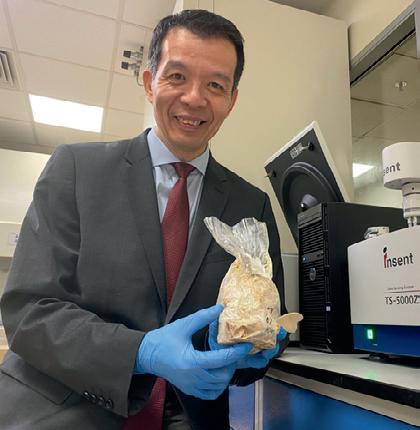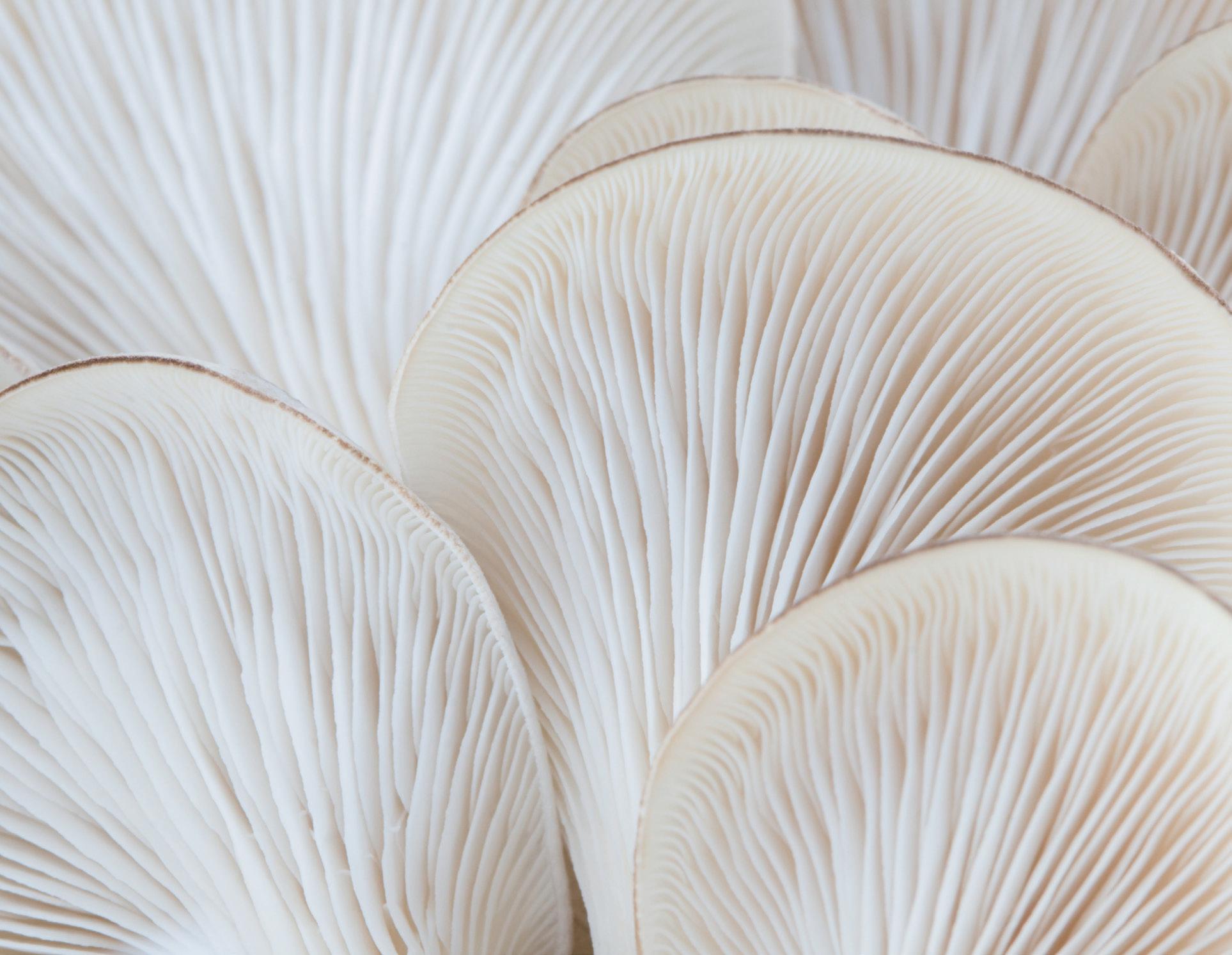
2 minute read
Fungi-based meat alternative

Fungibased meat alternative
Image credit: NTU Singapore
Professor William Chen presenting a freshly sprouted oyster mushroom.
Scientists from Nanyang Technological University, Singapore (NTU Singapore) have developed a method of producing a food product that has both the taste and shreddable texture of meats like chicken — but is cultivated from fungi.
Even better, the scientists say that the protein product is more nutritious than several other plant-based meat alternatives.
Importantly, nutrient-rich food waste is used as a base from which to cultivate the fungi (specifically Agaricus bisporus). This growth medium imparts the fungi with protein, iron and amino acids, which typically need to be added separately to meat alternatives produced with peas, chickpeas, wheat gluten and soy.
Production of the protein is more sustainable as it can reuse waste streams from food and beverage processing, by-products like soybean skin, wheat stalk and brewers’ spent grain.
Professor William Chen, Director of NTU’s Food Science and Technology (FST) program, and leader of the development of the product, said: “Our fungi-based food product is yet another triumph for NTU, as we look to find successful ways to find new uses for products that would otherwise be left to waste.
“Upcycling these products to cultivate fungi, a food source familiar to Asian consumers, is an opportunity for enhancing processing efficiency in the food supply chain, as well as potentially promoting a healthier non-animal protein alternative to enrich diets.”
The NTU team is collaborating with The FOODBOWL, which is part of the New Zealand Food Innovation Network, to work towards commercialisation of the product.
Grant Verry, CEO of The FOODBOWL, said: “We are excited to be able to support global innovation here at The FOODBOWL to develop more nutrient-rich alternative proteins by utilising local waste streams.
“New Zealand and Singapore already have strong collaborative agreements in place and this project is another great example of the value such relationships can deliver for both country’s economies and overall food systems, with industry-led and government-enabled innovation for the food sector.”
The NTU product is said to taste similar to meat due to the presence of high levels of amino acids, and glutamic and aspartic acids, which all contribute to its distinctive meaty flavour. The scientists hope that this, plus its fibrous and meaty texture, will make it easier for consumers to embrace the alternative protein.
Chen said: “We are motivated by our close ties with the industry to translate our findings into solutions for pressure points for today’s food and beverage producers, such as improving the flavour, nutrition and sustainability profiles of their products.
“Nature, in the form of fungi, is a powerful tool to help corporations not only cut down on waste but potentially improve human diets, but they require research and innovation, which we are glad to provide, to bridge that gap.”
The researchers are hoping to commercialise the product by 2024.










